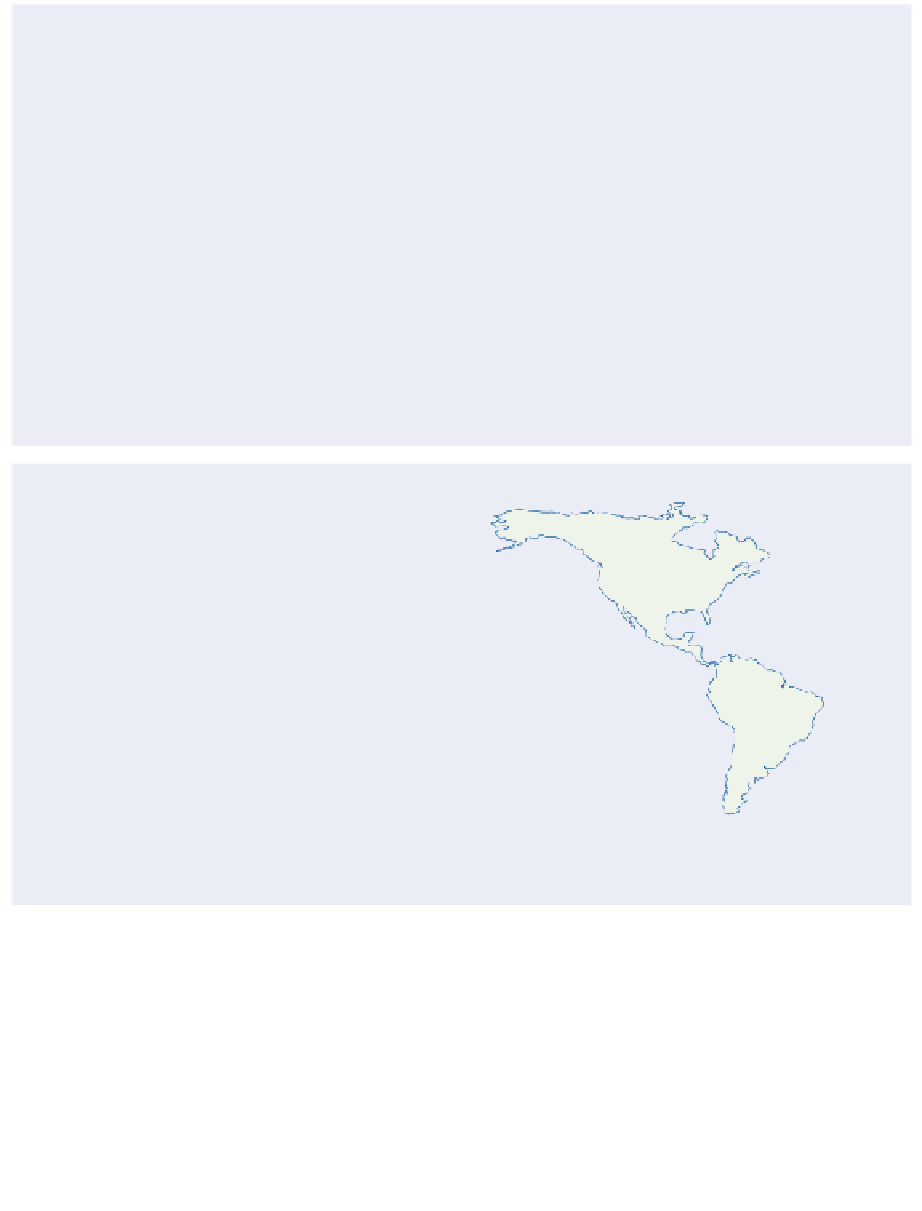Geoscience Reference
In-Depth Information
(A)
I
D
EQ
(B)
ID
EQ
Figure 8.5
Synoptic reports from (A) surface land stations and ships, and (B) from upper-air sounding stations available
over the Global Telecommunications System at the National Meteorological Center, NOAA, Washington, DC.
Source:From Barry and Carleton (2001).
Russia since 1965 and, more recently, by the
European Space Agency, India and Japan (see
Box
8.1
). There are two general categories of weather
satellite: polar orbiters providing global coverage
twice per 24 hours in orbital strips over the poles
(such as the United States' NOAA and TIROS
series and the former USSR's Meteor); and
geosynchronous satellites (such as the Geostation-
ary Operational Environmental Satellites (GOES)
and Meteosat), giving repetitive (30-minute)
coverage of almost one-third of the earth's surface
in low mid-latitudes (
Figure 8.6
). Information on




















































































































































































































































































































































































































































































































































































































































































































































































































































































































































































































































































































































































































































































































































































































































































































































































































































































































































































































































































































































































































































































































































































































































































































































































































